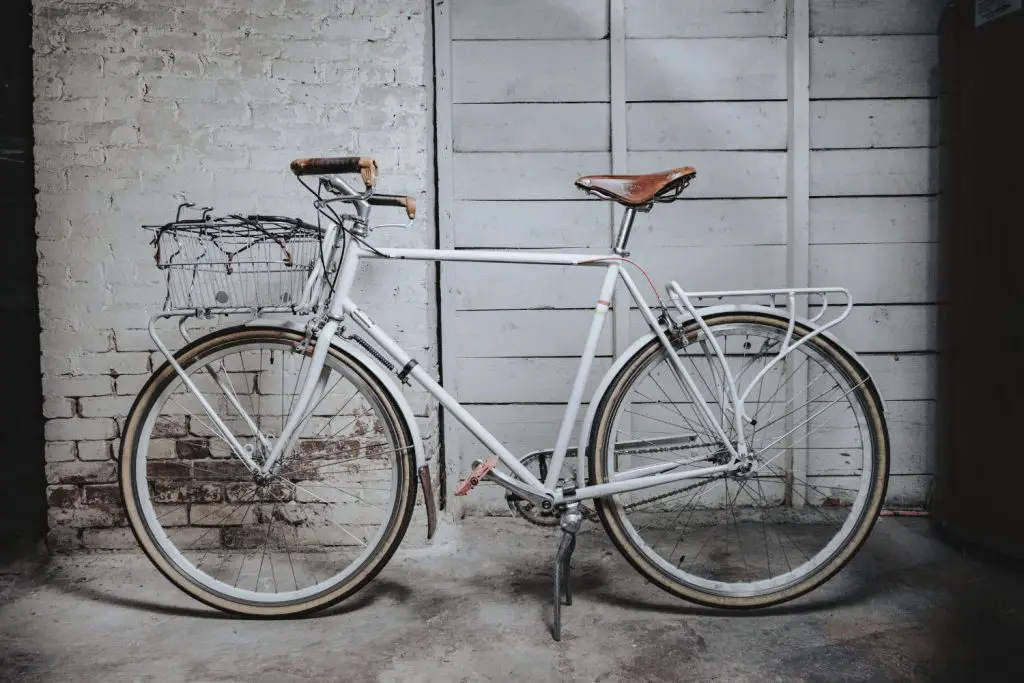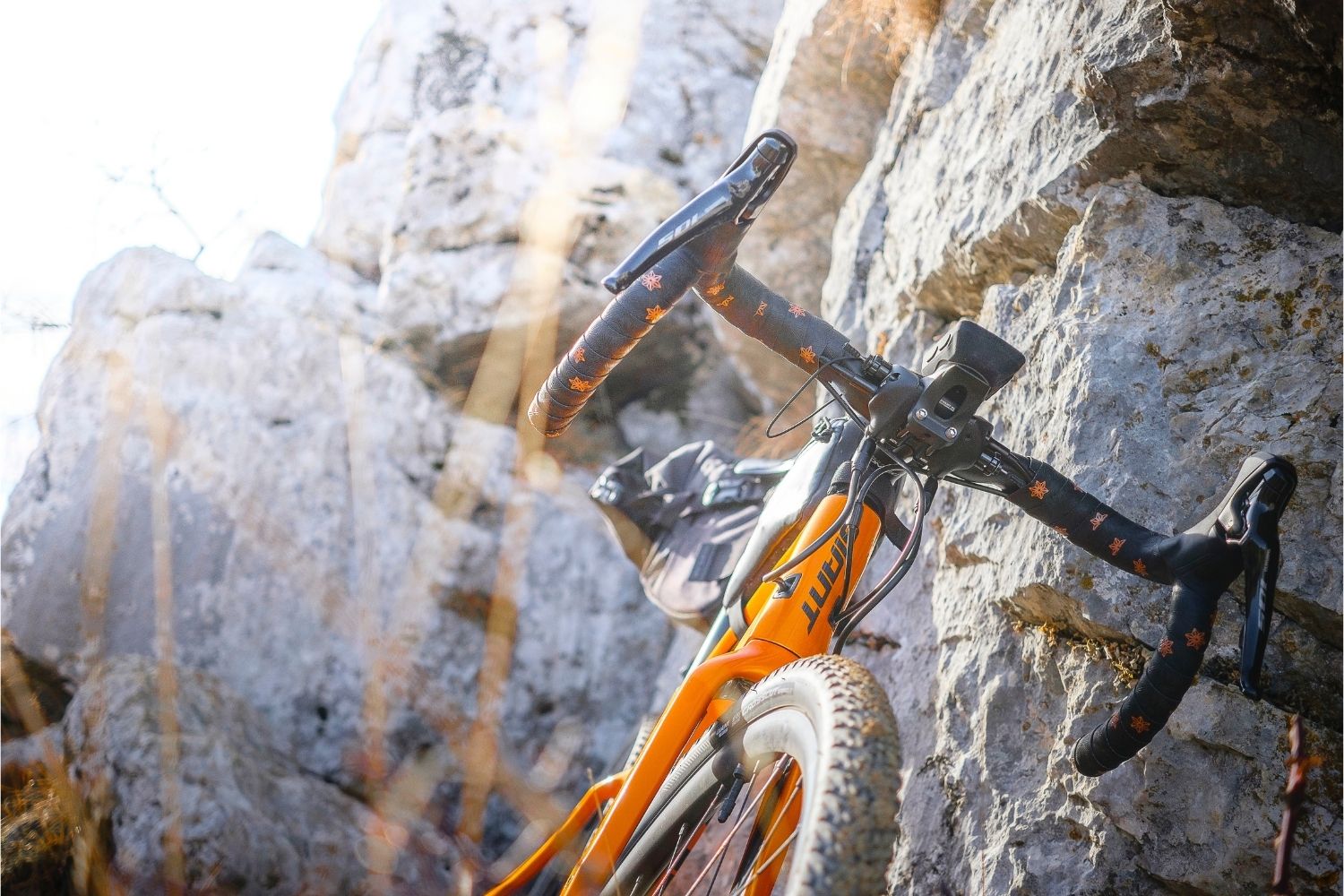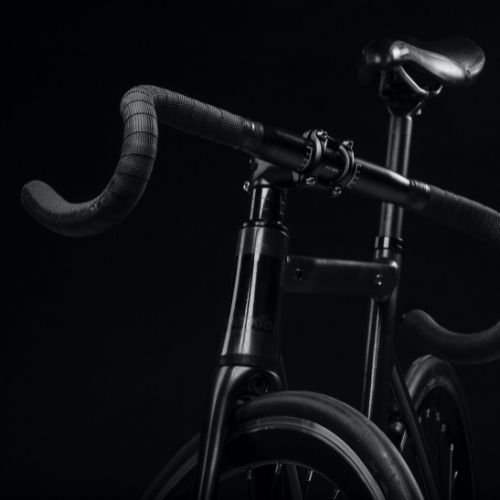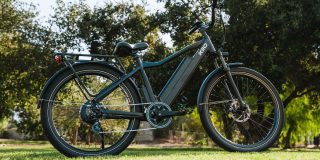Do you ever ride your bicycle around and think, “man, this would be a lot easier if I could just put it down without having to worry about it falling over”? If so, then you’re not alone. A lot of people feel that way! The good news is that there are plenty of ways to prevent your bicycle from falling over when you’re not riding it. In this article, we will discuss the top five reasons why bicycles don’t have kickstands. Stay tuned!
Major manufacturers don’t install kickstands on their bicycles mainly because most avid riders will remove them. This is because kickstands add extra weight to the bicycle, they can catch on things on the trail, they add additional cost and more.
Read on to find out more reasons, and learn a little bit more about this!

- 1. Extra weight on the bicycle
- 2. Kickstands can catch on roots and other items on the trail
- 3. Damage happens to bicycles when they fall over with a kickstand
- 4. Adding a kickstand costs money
- 5. They provide less aerodynamics and make riding harder
- 6. More components to make noise
- Can you add a kickstand after buying it?
- What are some ways to prop up your bike without a kickstand?
- Conclusion
1. Extra weight on the bicycle
One of the main reasons why bicycles don’t have kickstands is because they add extra weight to the bicycle. This can make it more difficult to ride, and it can also cause the bicycle to be less stable. When it comes to enjoying a good bicycle ride, every ounce counts! Any additional weight means you have to pedal that much harder, resulting in a less enjoyable ride.
Because of this main point, most avid cyclists remove their kickstands and is another big reason why manufacturers don’t want to install them on every bike in the first place.
2. Kickstands can catch on roots and other items on the trail
While mountain biking kickstands tend to catch on roots or other items that are in your way. This can cause you to lose control of your bicycle and fall over. Yikes! As a result, many people choose not to use kickstands because they don’t want this type of thing happening when riding their bikes around on the trails.
The last thing that you want is to catch something while on the trails, this can cause plenty of damage when you go head over the handlebars and land on the ground.
3. Damage happens to bicycles when they fall over with a kickstand
One big concern is the fact that people put a lot of faith into their kickstands! However, because they are small kickstands, on a large bicycle, they tend to fall over. When your bike falls over, it can cause a lot of damage by bending derailleurs, brake systems and so much more.
Kickstands are often not durable enough to hold up a bicycle when loaded with gear.
If you’re using kickstands on your bicycle, then it’s likely that the kickstand will bend or break over time as well. This is because kickstands aren’t built for endurance and can easily fail if they are overloaded by a bicycle and its gear.
4. Adding a kickstand costs money
Manufacturers of bicycles are all about offering the best bicycle for the lowest cost. Adding kickstands to a bicycle (especially since not everyone wants one) adds additional costs that they have to pass on to the customer.
It not only costs materials, but it also costs labor time, quickly driving up the cost of the bicycle. Instead, they let the customer add it on afterward if they want to.

5. They provide less aerodynamics and make riding harder
Kickstands might look cool and are somewhat functional, but they create a lot of drag. This can make it more difficult for the rider to pedal their bicycle and also increase wind resistance when riding at high speeds.
In the end, kickstands are often seen as a nuisance rather than a helpful tool. They can add weight, get in the way while riding, and cause damage when the bicycle falls over. For these reasons, it’s no wonder that bicycles don’t come with kickstands installed from the factory! Instead, we have to find ways to keep our bicycles from falling over when we’re not riding them.
6. More components to make noise
Kickstands are well known to be one of the main items that rattle on a bicycle! For those that enjoy riding their bikes on their daily ride, the last thing you want is for a component to constantly be rattling around on the bottom of your bike. Just due to the annoyance, many cyclists remove their kickstand from their bikes.
- Why does a bike need a kickstand?
- Top 7 Best Cheap Mountain Bike Grips for Under $20
- Top 6 Best Bicycle Chain Cleaners in 2022
Can you add a kickstand after buying it?
Absolutely! Depending on the kickstand you choose, some kickstands are designed to connect to your bicycle in one of two ways. Some kickstands have a clamp that will mount onto bicycle and allow it to sit at an angle. Other kickstands bolt into place using existing mounting points on bicycles or add-on mounting points.
Once you’ve chosen the kickstand that works best for your bicycle, installation is generally a straightforward process. If you’re not sure how to go about doing it yourself, bring it into your local bike shop and they will be able to help you out!
What are some ways to prop up your bike without a kickstand?
If you don’t want kickstands on your bicycle, there are plenty of other options available to help keep your bike upright while it’s not being ridden.
The main one would be to just lean it up against a wall, tree, post or something that is vertical. You can also use a kickstand pad, which is an object that you put between the kickstand and what you’re leaning your bike against. This will help to prevent any damage from occurring to either the kickstand or the surface you’re propping it up against.
Another option would be using a bicycle stand! These stands are designed to hold up your bicycle while you’re not riding it, and some models even have a storage area to place tools or gear.
Conclusion
Bicycles without kickstands have several reasons behind them, the most common being that they add weight and can be unstable. They also often catch on things when riding, which can cause you to lose control. Damage is more likely to happen when a bicycle falls over with a kickstand than if it doesn’t have one.
Additionally, kickstands are often not durable enough to hold up a bicycle when it’s loaded with gear and can easily break. Finally, kickstands add additional costs to the bike manufacturer because they require more materials as well as more labor time. If you want one on your bike after purchase, you’ll need to pay for that.















